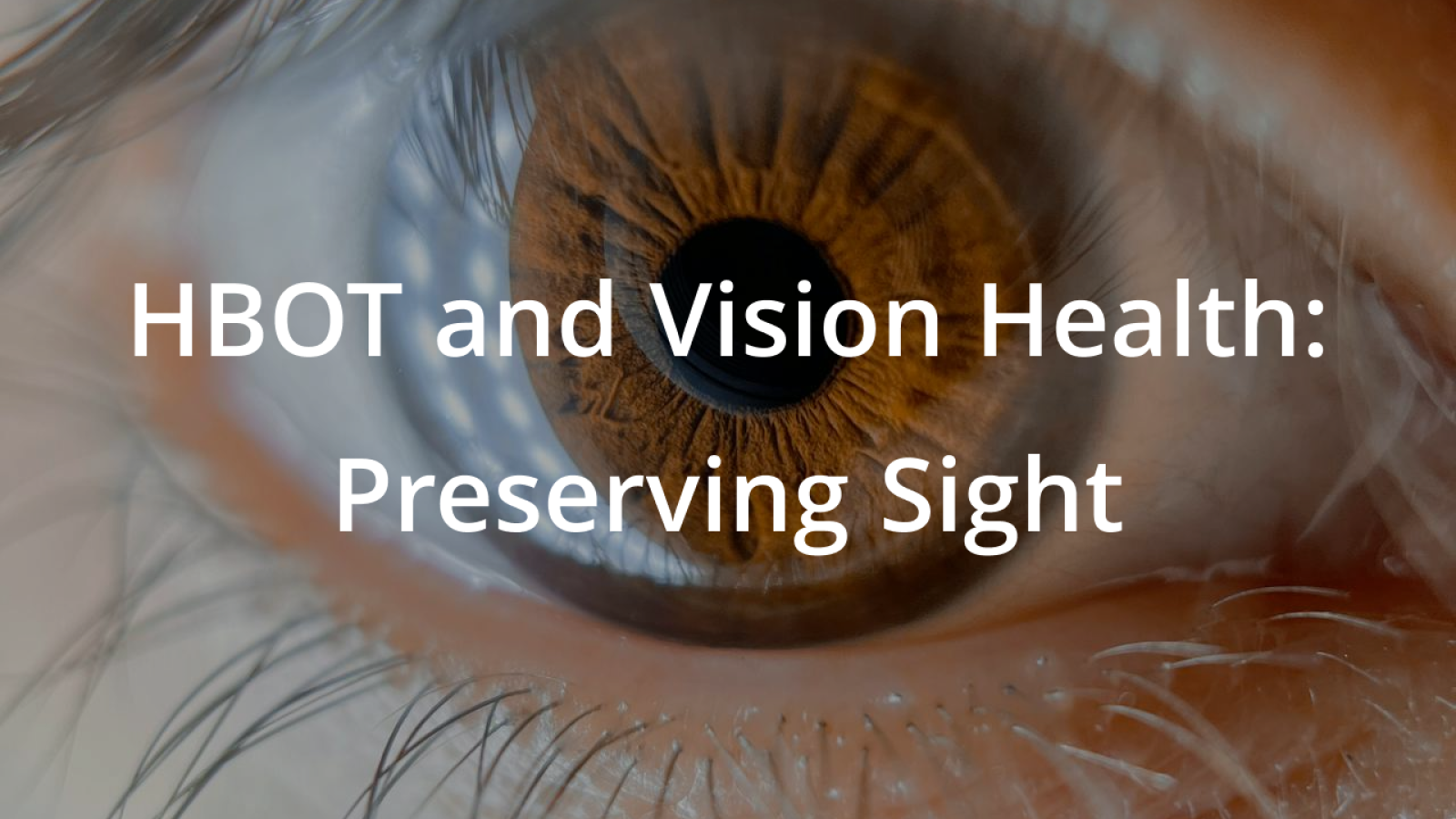Hyperbaric Oxygen Therapy (HBOT) is well-recognized for its efficacy in treating conditions like decompression sickness, diabetic foot ulcers, and severe infections. However, its potential applications in vision health are gaining attention in the medical community. This therapy, which involves breathing pure oxygen in a pressurized chamber, is now being explored for its benefits in treating various eye-related conditions, including macular degeneration. This blog delves into how HBOT can aid in preserving vision and improving eye health.
Understanding Hyperbaric Oxygen Therapy
Hyperbaric Oxygen Therapy enhances the body’s natural healing processes by inhaling 100% oxygen in a total body chamber, where atmospheric pressure is controlled and increased. This process significantly increases oxygen delivery to all body tissues, including the eyes, which can be particularly beneficial for repairing damaged tissues and restoring function in various ocular conditions.
Potential Benefits of HBOT for Eye Conditions
- Enhanced Oxygen Delivery: In conditions like macular degeneration, where a decreased oxygen supply can lead to tissue damage and vision loss, HBOT can increase oxygen levels in the blood, thereby delivering more oxygen to the retina. This enhanced oxygenation can potentially stop or reverse the retina’s degeneration.
- Reduction of Hypoxia: Many eye conditions, including diabetic retinopathy and vein occlusion, involve hypoxia (an inadequate oxygen supply). HBOT can reduce hypoxia by saturating plasma with oxygen, providing oxygenation to the ischemic retinal tissues.
- Decrease in Retinal Swelling: HBOT has been shown to reduce swelling in various body parts and is believed to have similar effects on the retinal tissues. This reduction in swelling can improve retinal function and potentially halt the progression of conditions like macular degeneration.
- Stimulation of Healing: By enhancing blood oxygen levels, HBOT can stimulate vascular growth and accelerate the regeneration of retinal cells. This may improve outcomes for patients undergoing retinal surgery or those recovering from eye injuries.
Clinical Studies and Evidence
Several studies have explored the use of HBOT for eye conditions. For instance, patients with sudden blindness caused by retinal artery occlusion have experienced significant improvements in vision following HBOT. Moreover, ongoing research continues to investigate the effectiveness of HBOT in treating chronic conditions like age-related macular degeneration, with some patients showing improved visual acuity and decreased progression of the disease.
How HBOT Is Administered for Eye Conditions
Hyperbaric Oxygen Therapy for vision health is administered similarly to other HBOT applications. Patients enter a hyperbaric chamber and breathe 100% oxygen at pressures greater than normal atmospheric pressure. Treatment protocols can vary based on the specific condition being treated, but typically, sessions last around 90 to 120 minutes and may be repeated over several days or weeks.
Who Can Benefit from HBOT for Vision Health?
Patients suffering from eye conditions characterized by poor oxygenation and inflammation could benefit from HBOT. Patients need to consult with their healthcare providers to determine if HBOT suits their specific condition.
Conclusion
While HBOT is not a cure-all for eye conditions, it offers promising potential for enhancing vision health, particularly in conditions associated with reduced eye oxygen supply. As research expands, the scope of HBOT’s applicability in ophthalmology continues to grow, offering hope for individuals struggling with severe vision impairments.
If you or someone you know is suffering from an eye condition and interested in exploring Hyperbaric Oxygen Therapy as a treatment option, we invite you to read more about this innovative therapy on our blog or contact us directly. Under Pressure Hyperbarics is dedicated to providing cutting-edge treatments that enhance health and improve quality of life.
